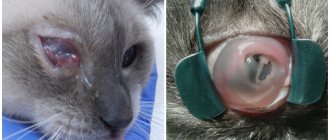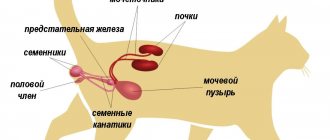Vaccination is one of the most accessible and proven effective methods of prevention in the fight against dangerous infectious diseases in cats. Vaccination, carried out in a timely manner, not only preserves the health of the animal, but also saves the owner from expensive treatment in case of infection.
Do cats and kittens need to be vaccinated?
There is a misconception that it is not necessary to vaccinate domestic cats. After all, often the pet has no contact with cats, dogs, or other potentially dangerous animals. In addition, he does not go outside, so the chance of catching an infectious disease is also minimal.
Indeed, compared to cats that lead a frivolous lifestyle, a pet has a lower risk of infection. However, the environment in a standard living room is also far from sterile, so a cat can become infected even after contact with some item of clothing or something brought from the street.
Well, if your pet takes regular independent walks, participates in exhibitions, or goes to the dacha in the summer, then there should be no debate about the need for vaccination at all.
For your information! Kittens, just like adults, need vaccinations; restrictions may apply only to newborn babies.
Is vaccination necessary for animals that do not leave the house?
The opinion that an animal that lives exclusively at home and does not leave the apartment cannot get sick is WRONG!
After all, most viruses are transmitted by airborne droplets. We all open the vents and windows, which may well provoke the occurrence of the disease.
We often meet homeless animals on the street, some even show sympathy and pet and feed the poor thing, and children generally play with them.
At this moment, the causative agent of a disease dangerous for your furry household may, together with the saliva of the playful “street child,” get onto the person’s clothes.
This is how the virus enters the apartment, where it meets an unprotected pet who loves to sniff, lick and rub against shoes.
I think that these illustrative examples (in which everyone probably recognized themselves) are enough to conclude that it is necessary to vaccinate both domestic animals, in the literal sense of the word, and pets that are walked on the street and regularly taken to the countryside.
Diseases for which cats are vaccinated
Every owner of a furry pet should know what vaccinations are given to cats and what diseases they are vaccinated against. Today, animals are most often vaccinated against:
- calcivirosis;
- rhinotracheitis;
- rabies;
- panleukopenia (distemper);
- infectious peritonitis;
- trichophytosis and microsporia (ringworm);
- leukemia (leukemia).
Vaccinations for kittens: what and when to do, at what age
Important! There are no vaccinations for cats against toxoplasmosis (a common disease). Therefore, to prevent your pet from getting sick from it, you should follow the rules of prevention.
Rabies vaccination is mandatory. Vaccination is usually carried out every year. Rabies is dangerous not only for the animal, but also for the owner who comes into contact with it. And you can bring this virus into your home directly on your shoes, on which particles of saliva or feces of a sick animal will remain.
Other diseases, especially viral ones, are also prevented by annual revaccination. Often the composition of the vaccine for cats is combined, so the pet is vaccinated against several diseases at once. This will eliminate a large number of injections, which often frighten the animal.
Diseases for which cats are vaccinated
Note! Today, there are already complex vaccines for cats against rabies with a three-year interval of action (an injection is given once every 3 years).
Timing of vaccinations
The immunity of newborn kittens and protection from pathogens is provided by mother's milk. Preventive vaccinations for babies under 10 weeks of age are given only in extreme cases when there is a real risk of disease. An individual vaccination regimen for a kitten up to one year old is developed by a doctor. He focuses on the data of vaccinations given to the cat, and the area’s level of infectious diseases. If the mother has been fully vaccinated, there is no increased risk of disease:
- at 10-12 weeks they give a complex vaccination against rhinotracheitis, panleukopenia, calcivirosis;
- at 12 weeks the kitten is vaccinated against rabies;
- after 3-4 weeks, re-vaccination is carried out;
- a healthy adult pet is vaccinated once a year.
At the request of the owner, the first vaccine includes the prevention of chlamydia. If there is an epidemic of ringworm in the area, there is a risk of infection; at 8 or 10 months the cat needs to be vaccinated. You can vaccinate your pet against infectious peritonitis at 16-20 weeks.
How to prepare a cat, cat, kitten for vaccination
Preparing your pet for vaccination may take some time. 1-2 weeks before vaccination, the animal must be given an anthelmintic drug. Fortunately, the choice of funds is quite wide, so you can choose the most suitable option. For example, it can be served directly with food or the drug can be dripped onto the withers without causing any protest in the pet. Kittens are also allowed to undergo preliminary anthelmintic treatment.
Deworming before vaccination
Vaccination of rabbits: what and when to do
Deworming before vaccination is carried out so that the cat can develop good immunity to the vaccine. Parasites harm the immune system by weakening it, resulting in decreased antibody production. Of course, even a vaccinated kitten is susceptible to diseases in this state. That is why it is necessary to expel helminths before vaccination.
If more than five months have passed since the last time you took anthelmintic drugs before vaccination, then you should not wait for repeated deworming. Vaccination should be done after 10 (not earlier) or more days after treatment of the animal. As a rule, this is done twice with a break of 10-15 days. This will destroy not only adult helminths, but also their eggs, which will hatch after 10-12 days. Anthelmintic drugs are used based on the cat's weight, so the pet should be weighed before each dose.
Important! Pregnant and lactating cats are prohibited from deworming!
Antihelminthic prophylaxis should be carried out 10 days before mating. Kittens are treated with anthelmintic drugs only 21 days after birth (you should consult a veterinarian before the procedure). Do not forget that some types of worms are dangerous not only for cats, but also for humans. Therefore, during the deworming period, you must strictly observe the rules of personal hygiene.
Deworming before vaccination
A little explanation
Vaccination (vaccinations) is a procedure used to prevent infection with viral diseases. The most dangerous are considered:
1) Rabies
2) Panleukopenia (feline distemper)
3) Calicivirus
4) Chlamydia
5) Viral rhinotracheitis
Each of these diseases has a risk of death. The worst evil is rabies, which is 100% fatal. The disease has no cure, and a person can easily become infected with the virus through contact with an infected animal (dog, cat, mouse, rat).
A less terrible disease is panleukopenia. The mortality rate here is slightly lower, but remains extremely high - 60-70%. Without knowing it, you can bring any virus into your home on clothes, shoes, picked flowers, grass, etc. Animals that are taken to the country or living in a private home are especially at risk.
Viral rhinotracheitis is also not a rare disease that wears out the cat’s body, while the temperature rises, the eyes and nose run, the animal refuses to eat and is in a very weak condition. Nothing good at all.
I will not talk in detail about other diseases. Not because they are not dangerous, but because in this article I don’t want to overwhelm you with medical details.
How to vaccinate yourself
When can you walk your puppy after the second vaccination?
Before vaccination, you must carefully study the instructions. It will indicate how the vaccine will be administered. For example, subcutaneous injections are placed at the withers. The rabies vaccine is injected either into the withers or into the muscle. In both cases you need to prepare:
- cotton pads (or just cotton wool);
- several sterile syringes (2 cubes or less). Insulin syringes are suitable;
- vaccine (if necessary, solvent for it);
- antihistamines (in case of allergic reactions). Suprastin must be available.
Injection into the withers:
- Calm the animal and pick it up.
- Draw the drug into the syringe. If the vaccine has two fractions, then first you need to inject the solvent into the vaccine vial with a sterile syringe and shake it.
- Wipe the area where the injection will be given with alcohol. Do it carefully and calmly so that the cat does not become nervous.
- Place the animal on all four paws. Take it by the withers and pull it up a little. The tension forms a notch, and you need to inject it into it. With a quick, confident movement, insert the needle into the subcutaneous tissue to a depth of 1.5 cm. The syringe should be parallel to the cat’s body. The drug should be administered at an average speed (do not hesitate), without sudden movements.
- Carefully remove the needle and release the animal.
How to vaccinate yourself
Into muscle:
- Place the cat on its side. Feel the muscle on the thigh (lower part) (the animal’s paw should be extended).
- The vaccine must be administered in a vertical, perpendicular position. Do it quickly and confidently. The needle should be inserted halfway (maybe a little deeper) into the densest place. If you overdo it, you can damage the sciatic nerve.
- Remove the syringe, stretch the muscle and release the pet.
Where does this information come from, and where are the sick animals?
Usually such animals do not live long enough for anyone to see them. And most of these sick, oblique and lame people live in shelters for homeless animals. You will definitely find at least one of these in your city.
While you live your schedule day and night, at the same time there is a constant struggle of the few volunteers in your city for the life and health of the poor tailed creatures on the street. They are the ones who find the funds, time, people and take the unfortunate animal for treatment and rehabilitation to a shelter or to their foster home.
If you don’t believe it or want to see for yourself, you can quite easily find a group on social media on the Internet. networks or even the website of a shelter in the city for the request “City Animal Shelter (name).” Come there at least once.
Where am I leading with all this? And to the fact that not everything we see is the true picture. In parallel, there is another world in which these diseases are encountered tens of times more often. And the issue of vaccinations is certainly not discussed there.
Vaccinations for cats by age: table
Table 1. Vaccination of cats, vaccination schedule
| Name of the disease | Primary vaccination | Revaccination | Subsequent revaccination | Type of injection | |
| First injection | Second injection | ||||
| Rabies | 12-13 weeks | — | At 1 year | Every year | subcutaneous |
| Panleukopenia | 8-12 weeks | In 21-28 days | At 1 year | Every year | subcutaneous |
| Rhinotracheitis | 8-12 weeks | In 21-28 days | At 1 year | Every year | subcutaneous |
| Calcivirosis | 8-12 weeks | In 21-28 days | At 1 year | Every year | subcutaneous |
| Chlamydia | 8-12 weeks | In 21-28 days | At 1 year | Every year | subcutaneous |
| Trichophytosis | 1-6 months | In 10-14 days | At 1 year | Every year | intramuscular |
| Microsporia | 1-6 months | In 10-14 days | At 1 year | Every year | intramuscular |
What does a vaccine do to the body?
Any vaccine contains a set of inactivated (weakened) viruses that do not cause the disease itself, but provoke the formation of antibodies in the animal’s body. Antibodies are small “helper cells” of the immune system that fight infection.
These helpers remember the “face” of the virus and, if they encounter it in the future, they will be ready to immediately and quickly kill it and prevent it from spreading throughout the body.
Of course, antibodies are formed without vaccination. This will happen after the cat gets sick. But, since her body was not familiar with the virus in advance and cannot immediately recognize it, it will take much more time to form protective antibodies.
But the disease won’t wait. Every day the cat’s immunity will fight this infection, but will lose the battle because it was not at all prepared for the attack, and its army of helpers turned out to be weak.
I hope that after all that has been said, opponents of vaccination will at least have doubts about their own decision. And it is best if the vaccination is done in the near future. But don’t rush to get dressed and run to the clinic until you read the whole article!
Dead and live vaccines
A live vaccine contains a weakened live virus. After its administration, active reproduction and engraftment of microorganisms begins, subsequently developing stable immunity. A “dead” (inactivated) vaccine contains a killed virus. After entering the cat's body, neither reproduction nor engraftment occurs, so the effect of the drug is less strong.
Sometimes in a vaccine, some of the diseases are represented by live strains of viruses, and some by killed ones.
Note! Dead vaccines are considered safer, but the reliability and duration of immunity in this case is lower. This is why live vaccines are most often preferred.
Dead and live vaccines
Review of popular vaccines:
- nobivac triquet. Complex vaccination for cats against viral rhinotracheitis, calicivirus, panleukopenia;
- nobivac Rabies. From rabies;
- multifel. From viral rhinotracheitis, calicivirus, panleukopenia, chlamydia;
- vakderm. From microsporia, trichophytosis;
- eurifel. From viral leukemia, viral rhinotracheitis, calicivirus, panleukopenia;
- felovax. From viral rhinotracheitis, calicivirus, panleukopenia, chlamydia;
- microderm. From microsporia, trichophytosis;
- felocel. From panleukopenia, calicivirosis, viral rhinotracheitis, chlamydia;
- feligen. From panleukopenia, calicivirus infection, viral rhinotracheitis and rabies;
- chlamycon. From chlamydia;
- rabizin. From rabies;
- quadricate For rabies, panleukopenia, calicivirosis, rhinotracheitis;
- purevax. From panleukopenia, calicivirosis, rhinotracheitis, chlamydia, rabies.
Popular drugs for vaccination
There are now domestic and imported effective preparations for cat vaccinations on the market. Each product has its own advantages. It is important to know that the drug must have a certificate of veterinary supervision. If it is a foreign product, it must be accompanied by instructions in Russian. Products that are not approved for use in Russia cannot be used in vaccination.
The most popular drugs are those produced by the famous Dutch manufacturer. Nobivac series products are used in vaccines:
- Tricat,
- Forcat,
- Rabies.
Tricat is a live three-component vaccine. It forms protection against viral infections and panleukopenia. The difference between Forcat is the presence of a fourth active ingredient, which creates immunity against chlamydia. Vaccination is carried out twice, the interval between vaccinations is 21-28 days. Vaccination can begin at 8 weeks of age. NobivacRabies is an anti-rabies drug. Its validity period is 3 years. The vaccination is given for the first time at the age of 3 months.
The complex effective preventive drug Multifel-4 is produced by the domestic company Narvak. This vaccine prevents the development of calcivirosis, panleukopenia, rhinotracheitis, and chlamydia. The vaccination is done twice with a break of 3-4 weeks. At one year of age, revaccination is carried out.
The French manufacturer Merial has 2 products from the Quadricat series in its assortment. The inactivated agent Corifelin forms protection against herpes and calcivirus. Panleukopenia and rabies can be prevented by administering the live Rabiff-Feliniff vaccine. The advantage of French drugs is the ability to mix both drugs and give 1 injection. Moreover, a secondary vaccination is not required; revaccination is performed annually.
For infection with ringworm, the live vaccine Mikoderm is used. The drug Polivak-TM is highly effective against dermatovicosis. The product is produced by the domestic company Narvak.
When is it forbidden to vaccinate cats?
Kittens are prohibited from vaccinations at an early age. There is no specific age for vaccination, since veterinarians have different opinions on this matter. Some believe that only three months after birth can you start thinking about vaccination. Undeveloped immunity, strong dependence on mother's milk, and unpreparedness of the lymphatic system are the main arguments against vaccinating young animals. But this is only true for domestic, purebred kittens, born and growing under the supervision of people.
Foundlings who have likely had contact with sick animals need vaccination starting at 2 months of age. In any case, before vaccination, you should examine your pet, and in case of any deviations or health problems, inform your veterinarian. Also, do not violate the age restrictions specified in the vaccination schedule for cats by age.
When is it forbidden to vaccinate cats?
It is prohibited to vaccinate:
- if the cat had contact with sick animals. In this case, you must wait until the incubation period has passed (at least two weeks);
- if the cat's eyes are watery or she starts sneezing. The animal may have a cold, so it is recommended to wait a couple of weeks and only then vaccinate;
- if the cat has fleas or lichen. This applies more to foundlings. Vaccinations for cats are not recommended until fleas are eliminated and skin diseases are cured;
- after surgery. Usually, doctors themselves warn that vaccination cannot be carried out within a month after the operation;
- during pregnancy and lactation in cats.
Quarantine
After each vaccination, your pet must undergo a three-week quarantine. The fact is that strong immunity is formed in the cat during this time, and the vaccine will not yet be able to protect its body from infection. During this period, it is not recommended to bathe, overcool or exercise, or take your pet with you outside (for example, to the dacha). If there are other animals in the house that go outside, it is better to prevent the cat from coming into contact with them.
The initial single injection of the vaccine does not form lasting immunity, so for many diseases it is necessary to carry out revaccination - re-vaccination.
Without what vaccinations will a cat not be allowed abroad?
Every self-respecting cat or kitten should have a veterinary passport, especially if the owner plans to travel abroad with his pet. Without mandatory vaccinations against rabies, calcivirosis and rhinotracheitis (viral respiratory diseases) and panleukopenia, the animal simply will not be able to pass inspection. Vaccination must be completed at least 30 days, but no more than 11 months before departure.
Note! A vaccination certificate may also be required upon check-in at the hotel.
Without what vaccinations will a cat not be allowed abroad?
At what age should you vaccinate?
Newborn kittens have a colostral or passive immune system. It is provided by maternal antibodies. They enter the body of kittens during feeding along with colostrum, as well as in utero through the placenta.
Note! During the first time after birth, the kitten will be protected only from those infectious diseases for which the mother cat was vaccinated. Typically this protection lasts for 3-4 months. This period depends on the level of antibodies in the cat, as well as on the timing of its vaccinations.
For this reason, the first vaccination for kittens born from vaccinated cats is not carried out before 2-3 months. This is due to the fact that the weakened viral organisms that come with the drug will be neutralized by existing antibodies. During this process, the immune system is not activated.
Many veterinarians advise performing the first vaccination for cats and kittens from 3 months. During this period, the antibodies that came from the mother no longer become active and cannot fight viruses. Also, you should not vaccinate when changing teeth; they usually change from 4 to 8 months.
Are there any complications or side effects?
If you follow the instructions and use high-quality drugs, the occurrence of side effects after vaccination is reduced to a minimum (up to 1%). The most common complications are:
- allergy to the components that make up the drug. If there is salivation, difficulty breathing, involuntary defecation, or inappropriate behavioral reactions after vaccination, the animal will most likely need the help of a veterinarian. If over the next 20 minutes. the condition has not stabilized, it is necessary to urgently contact a veterinary clinic;
- when vaccinating an already infected pet (when symptoms have not yet appeared). This happens extremely rarely and can complicate the disease, even leading to death. Before the procedure, you must observe a 2-week quarantine, and also contact a veterinarian for a full examination of the animal;
- redness or a small bump at the injection site. This is a completely normal phenomenon, and owners should not worry about it. After a couple of days, the visible consequences of the injection will disappear without a trace.
Vaccination is an effective and inexpensive method of preventing diseases that are dangerous for cats. Timely vaccination will not only keep your pet healthy, but will also save you from expensive treatment in case of infection.
What to do after vaccination?
After vaccination, your pet’s body is especially vulnerable, so in the first few days it needs to be given maximum of your attention and care. The animal may experience drowsiness, apathy, and decreased appetite. These symptoms usually resolve within 2–3 days and do not require veterinary intervention. A couple of weeks after vaccination, your cat or dog develops stable immunity, which lasts for 12 months (depending on the type of vaccine. — Ed.
.), Then the level of protection will gradually begin to decrease. That is why vaccination is not a one-time event, but a cyclic procedure that is carried out throughout the life of a four-legged friend.
Expert opinion
Tell your doctor if you notice side effects
Marina Lebedeva, chief veterinary doctor:
What types are there?
Vaccines for cats and kittens are as follows:
There are different types of vaccination, during which a weakened pathogen is introduced into the body, stimulating the immune system.
- Monovalent. The drug helps develop immunity against one type of infectious disease.
- Polyvalent. A complex vaccination for cats, after administration of which antibodies are formed aimed at combating two or more pathologies.
- Active. The drug contains a weakened virus or fungus that causes asymptomatic infection with the subsequent development of a protective immune response. This vaccination lasts for a long time, protecting the cat from infection.
- Inactive. They contain a dead virus, to which protection is formed that lasts for a short time.











